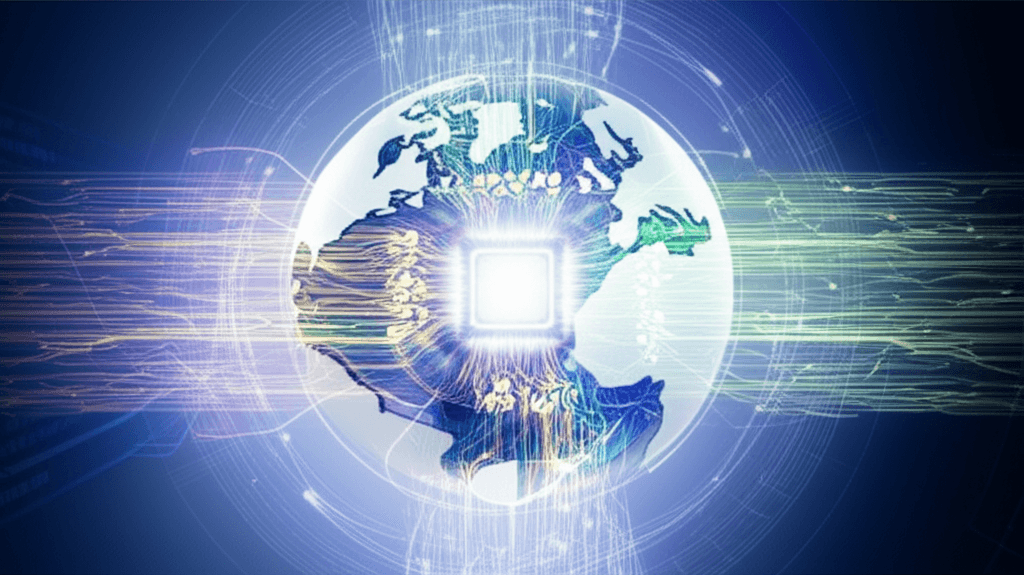Microsoft's Aurora AI Revolutionizes Weather and Environmental Prediction
Microsoft's Aurora AI revolutionizes forecasting, delivering unparalleled speed and accuracy for global weather and diverse environmental systems.
May 23, 2025

A new era in weather forecasting and environmental prediction is dawning with the advent of Microsoft's Aurora AI model. This cutting-edge foundation model, developed by Microsoft Research, demonstrates the power of artificial intelligence to deliver faster, more accurate, and more comprehensive atmospheric predictions than previously possible.[1][2][3] Aurora is not just a weather forecaster; it's a versatile system capable of predicting a wide array of environmental phenomena, from air pollution and ocean wave heights to the trajectories of devastating tropical cyclones, potentially transforming how communities prepare for and mitigate the impacts of extreme events.[1][4][3][5]
At its core, Aurora is a 1.3 billion-parameter foundation model.[6][7] This means it was first pre-trained on an enormous and diverse dataset – over a million hours of weather and climate simulations, including satellite imagery, radar data, weather station information, and outputs from traditional forecasting models.[1][3][5][8] This extensive pre-training allows Aurora to build a general, rich understanding of atmospheric dynamics.[6][9] Following this, the model is fine-tuned using smaller, high-quality datasets specific to particular tasks, such as 10-day global weather forecasting or 5-day air pollution prediction.[6][10][9] This two-phase approach enables Aurora to capture intricate patterns and tackle prediction tasks with high accuracy, even in data-sparse regions or for extreme weather scenarios where task-specific training data might be limited.[6][8] Its flexible 3D Swin Transformer architecture, coupled with Perceiver-based encoders and decoders, allows it to process heterogeneous input data and generate predictions across multiple resolutions, with a demonstrated capability down to 0.1° (approximately 11 km at the equator).[10][11][8][7][12]
The performance of Aurora is a significant leap forward. Compared to traditional numerical weather prediction (NWP) systems, which rely on complex physical equations and demand substantial supercomputing power, Aurora can generate forecasts with remarkable speed.[1][4][2] Once trained, it can produce a 10-day global weather forecast or a 5-day global air pollution forecast in seconds to under a minute on a single GPU, a task that can take hours for conventional systems.[1][4][10][3][7] This represents an estimated 5,000-fold increase in computational speed.[1][4][11][5][8][7][9] This efficiency does not come at the cost of accuracy. Microsoft reports that Aurora, when fine-tuned for medium-range weather forecasts at a 0.25-degree resolution, beat existing numerical and AI models across 91% of forecasting targets.[1][3][5] Notably, it outperformed the European Centre for Medium-Range Weather Forecasts (ECMWF) IFS model, often considered the gold standard, in 92% of targets for 10-day global forecasts at 0.1° resolution.[13][4][14][7] In specific, high-impact scenarios, Aurora has demonstrated its prowess. For instance, it accurately predicted the landfall of Typhoon Doksuri in the Philippines four days in advance when official forecasts were misdirected.[4][2][3][5][14] It also correctly forecasted all hurricanes in 2023 more accurately than operational forecasting centers and predicted a devastating sandstorm in Iraq a day before it occurred.[13][4][3][5] Furthermore, Aurora has shown strong performance in 5-day global air pollution forecasting, matching or surpassing the accuracy of the CAMS operational system.[10][9][15]
The implications of Aurora extend far beyond simply faster weather reports. Its speed and lower operational cost democratize access to high-quality forecasting, particularly for regions and communities that lack the resources for expensive supercomputers.[4][16][17][5][7] The ability to rapidly fine-tune the model for diverse Earth system prediction tasks – such as modeling ocean currents, wildfire spread, flood and drought modeling, crop yields, and shifts in sea ice coverage – opens new avenues for proactive environmental management and disaster preparedness.[1][13][18][17] While traditional models are based on first physical principles, Aurora learns from vast amounts of data, including observations, analyses, and re-analyses, allowing it to capture complex physical processes without explicit reliance on these equations.[13] This data-driven approach, leveraging the largest collection of atmospheric data ever assembled for an AI forecasting model, contributes to its enhanced accuracy, especially for extreme events.[1][15] Microsoft has made Aurora's source code and model weights publicly available, fostering further research and innovation within the scientific community.[4][3] The technology is also being integrated into consumer products like MSN Weather for more accurate hourly forecasts.[4][3][5]
Despite its impressive capabilities, AI weather models like Aurora are not without challenges. Researchers acknowledge that these models can struggle with "gray swan" events – rare, extreme weather phenomena not well-represented in their training data.[4] Since they don't inherently understand physics in the same way traditional models do, there's a potential for unforeseen errors.[4] However, the rapid advancements in this field, with other players like Google (GraphCast) and Huawei (Pangu-Weather) also developing powerful AI weather models, signal a significant shift in atmospheric science.[4][10][8][7][19] Aurora distinguishes itself through its generality, the scale and diversity of its training data, and its flexible architecture, leading to strong performance across a wider range of tasks and resolutions compared to models trained on more specific datasets like ERA5.[10][20][7][12] The ongoing collaboration with major weather prediction organizations like ECMWF, NOAA, and the UK Met Office aims to further validate and potentially integrate Aurora into operational forecasting systems, promising a future where AI plays an increasingly vital role in our understanding and prediction of Earth's complex environmental systems.[10]
Sources
[3]
[10]
[11]
[13]
[14]
[15]
[16]
[17]
[18]
[19]
[20]